VII aC
The archeological site of Font de la Canya
The millenary cradle of Catalonian vineyards
The findings on the La Font de la Canya archeological site are the oldest proof we have demonstrating the care and manipulation of vineyards in Catalonia.
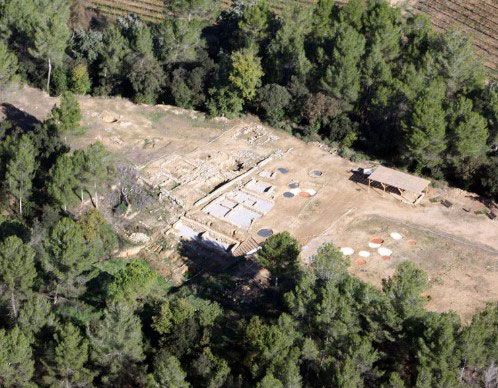
Aerial shot of the Font de la Canya archeological site, in Avinyonet del Penedès. Arqueovitis Cooperativa.
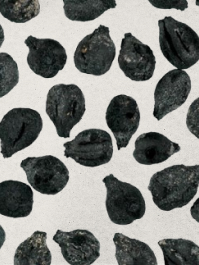
Archaeobotanical remains found within a mill. They are carbonized vitis vinifera seeds dating back to the VII BCE, from the first iron age
II dC
The Tarraco golden age: Capital of hither Iberia
The first internationalization of Catalan wines
The Romans arrived on the Iberian Peninsula landing at Empúries in 218 BCA. From then on, the Roman occupation of the entire Catalan territory was accompanied by the expansion of vine cultivation and winemaking, especially in the coastal regions, although it also reached inland areas.
DO

Plini the Elder spoke highly about the quality of our wines

Dressel type amphora. MNAT Inv: 34009 / G. Jové.
Monasteries: the new vinification centers
The repopulation of Catalonia through vineyards and wine
In the early Middle Ages, we find revival in the political, social, cultural and economical spheres; monasteries were considered a key part of this process thanks to the vitiviniculture that was led by these entities.

Aerial shot of the current Poblet monastery.
1685
Mascalbó and the Olles del Cònsul
The age of distilled drinks and its reign on the overseas trade
At the beginning of the XVII century, as a response to a new need of wine production for distillation, Catalonia saw an expansion of its vineyards. The Olles del Cònsul are the starting point, they opened the doors for this new commerce industry.
DO
Wine barrels at the port of Vilanova i la Geltrú in the late 19th century. Author: UNknown. ACGAF60-140 Municipal Photographic Archive.
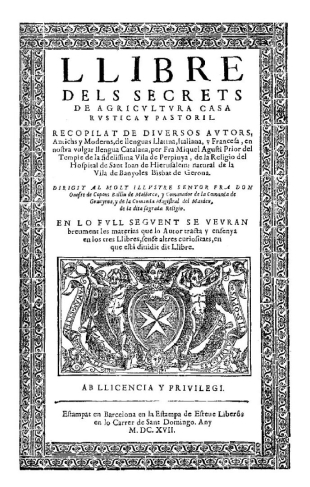
“Llibre dels Secrets d’Agricultura, Casa, Rústica i Pastoril” by the Catalan friar Miquel Agustí, edited in 1617. It offers theories about distilled drinks.
1809 – 1811
The malvasia of sitges from Can Falç
The oldest Catalan wine brand label, belonging to a Malvasia de SItges varietal from 1809
Malvasia de Sitges is one of the oldest grape varieties in Catalonia, with the most international cognition since the 16th century.
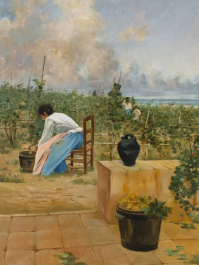
“The Malvasia of Sitges Harvest", 1895. Joachim of Miró. Sitges, oil on canvas. Cau Ferrat Fund. Maricel Museum.

Sitges, Fons Falç-Dalmau. "Malvasia of casa Falç de Sitges. Catalonian, bought in Palma de Mallorca in Apuntadores Street”, 1809-1811. Sitges Municipal Historical Archive, Falç-Dalmau Fund.
Catalan Sparklings
The catalan lead in sparkling wines and its internationalization
The first known sparkling wines from the Iberian Peninsula were made in Catalonia in the mid-19th century. Sant Sadurní d'Anoia led the sector.
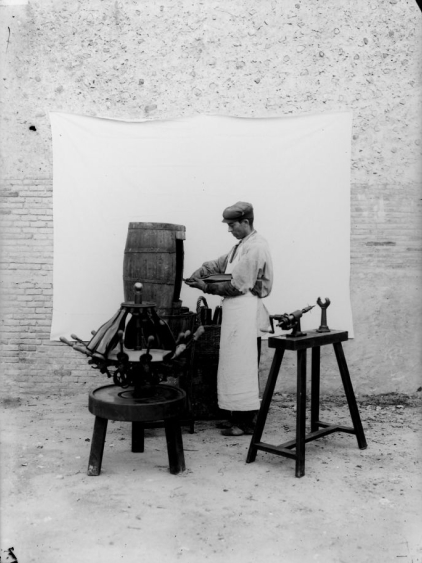
Worker during the process of opening a bottle to remove the yeast residue after the second fermentation, 1901. National Archive of Catalonia, ACAP20-1046-N-70.
The fight against Phylloxera
The struggle and overcoming of the three great European plagues of the 19th century.
○ The gateway phylloxera takes to get to Catalonia is in the town of Rabós, around 1879. All over Catalonia, antiphylloxeric associations were organized, consisting of farm house owners who started taking action against the plague by grafting their vines with American roots as a solution.
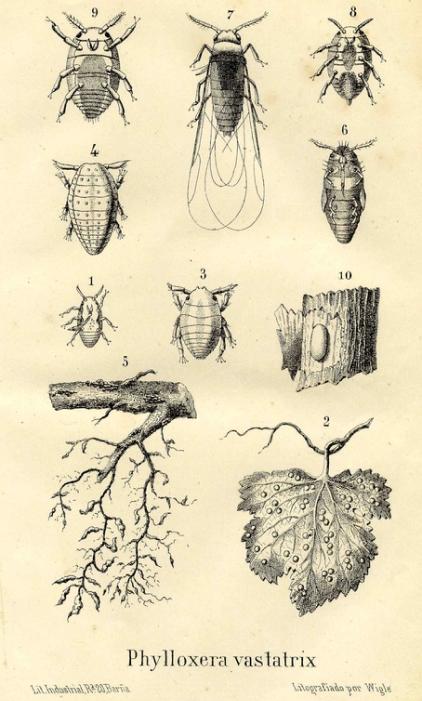
Details of the phylloxera vastatrix insect in “Estudios sobre la phylloxera vastatrix: precedidos de una reseña histórica de la vid y de sus enfermedades,” by Joan Miret, 1878. CDV Vinseum.
The oenological research stations of Vilafranca and Reus
Research and training spaces for rural land owners.
The oenological research stations are a key part of the journey towards modernizing and improving the quality of Catalan wines.
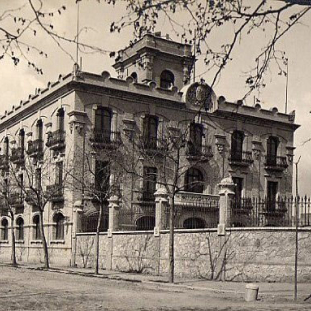
Postal of the Enological Research Station of Reus, around 1920. Public domain.
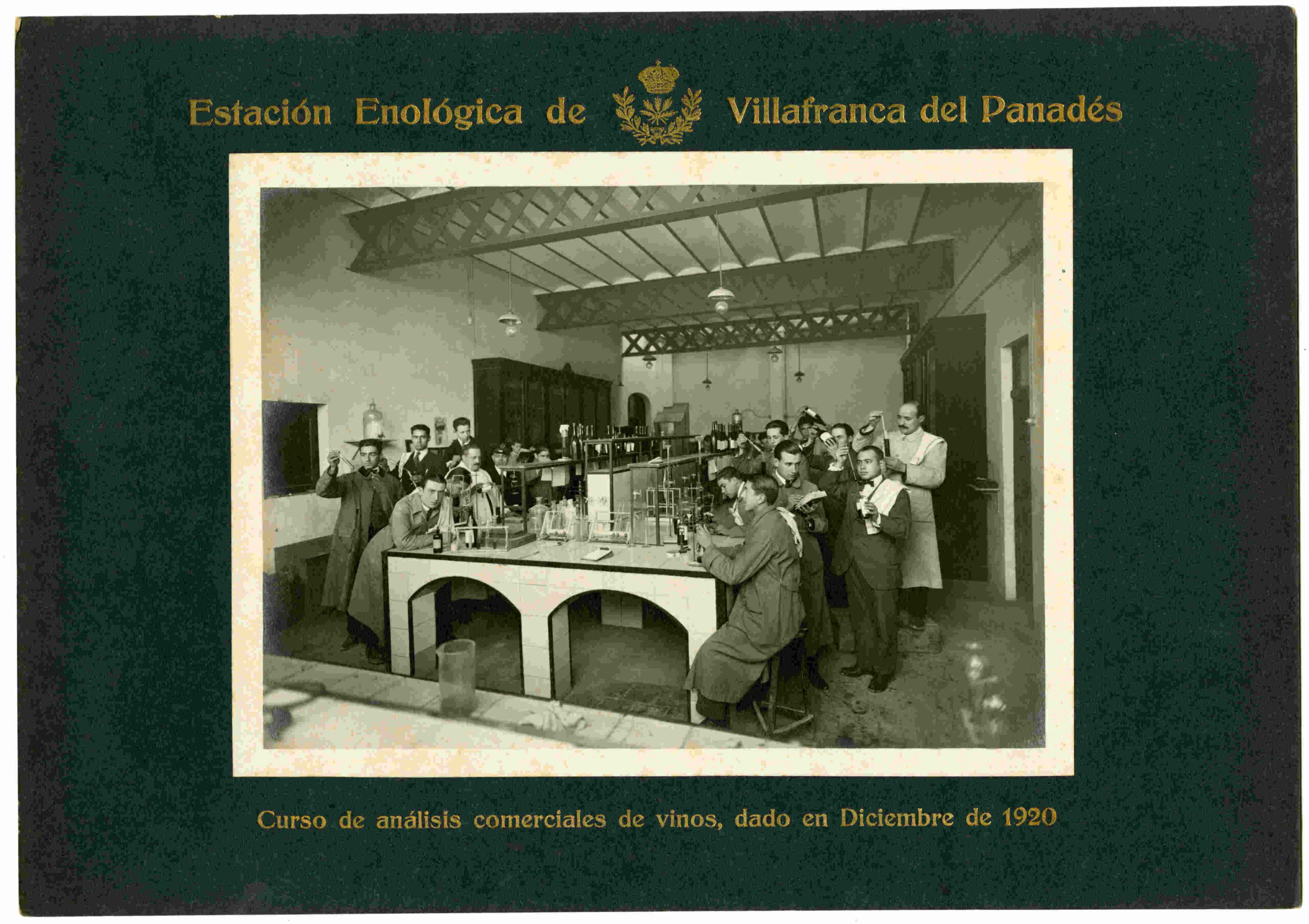
Laboratory room of the Enological Research Station of Vilafranca, class of 1918. Alt Penedès County Archive. Fons ACAP20-5, Institut Català de la Vinya i el Vi (INCAVI).
1875 – 1920
The cooperativism in catalan winegrowers
The organization of the wine-growing estates in catalan vitiviniculture.
The phylloxera crisis brought with it a considerable economic struggle for winegrowers, not only in the years they couldn’t harvest anything, but for the necessary investments they needed to make in order to uproot all the dead vines and substitute them with plague-resistant ones, grafted with American roots. Agricultural cooperatives provided the necessary coverage for this.

“Camperol la Unió de Rabassaires de Catalunya és la teua organització sindical : Com a tal ha vetllat i vetllarà sempre pels teus interessos de classe” // “Farmers, the Harvesters Union of Catalonia is your syndicate : It has and it always will look after the interests of your class”poster published by the Union of Rabassaires during the Civil War, by Ricard Fàbregas, 1936-1939.
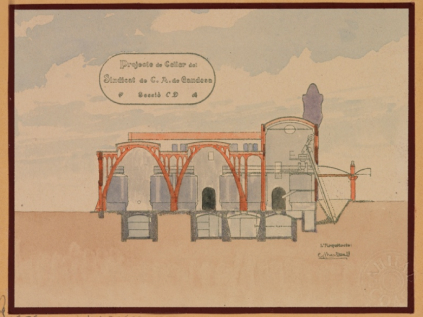
Cellar of the Sindicat Agrícol de l'Espluga de Francolí, 1910-1920. Enological Station glass plates.
From the Estatuto del Vino to the catalan DOs
The entry of Catalonia into a modern legislative framework.
In the 19th century, interest began to legally determine the origins of wines in a systematized manner. In 1932, the Estatuto del Vino proposed 6 Denominations of Origin in Catalonia.
DO
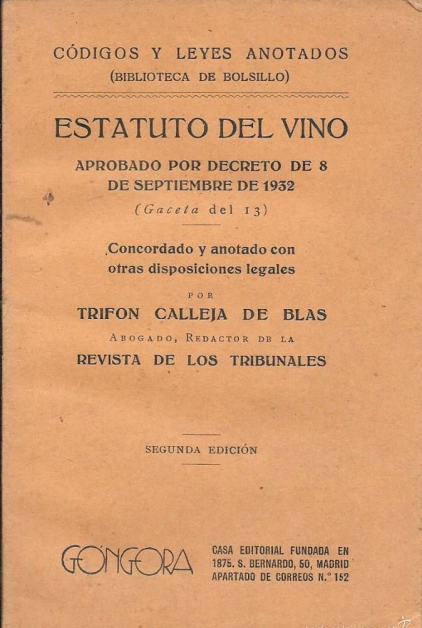
The Estatuto del Vino, turned into a law on 26 May 1933 and published in the Gaceta de Madrid No. 257, on 13 September 1932. Pages 1884 to 1900.
1980
THE INCAVI
Public Research Center serving the national viticulture and winemaking industry.
The wine-making research stations of Vilafranca and Reus continued their mission during the 20th century to support the Catalan wine industry. With the arrival of democracy in Spain, the creation of INCAVI takes on the mantle of leading these studies to this day.
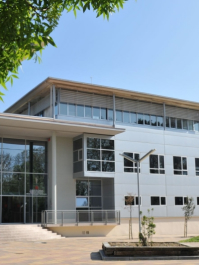
Current headquarters of the INCAVI in Vilafranca del Penedès and Reus
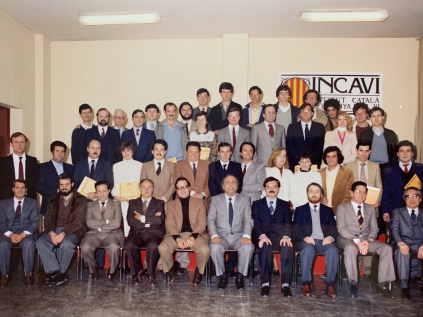
First enology course aimed for different industry professionals, led by Professor Jaume Ciurana. 1980. Private fund.
The achievements of catalan wines
The new triumphs of the Catalan wine industry
2023 is a year of optimism for the Catalan wine and vineyard industry. While its millennial career has yet again been struck by the pandemic, the balance between avant-garde ways of working and tradition hasn’t toppled.
DO
